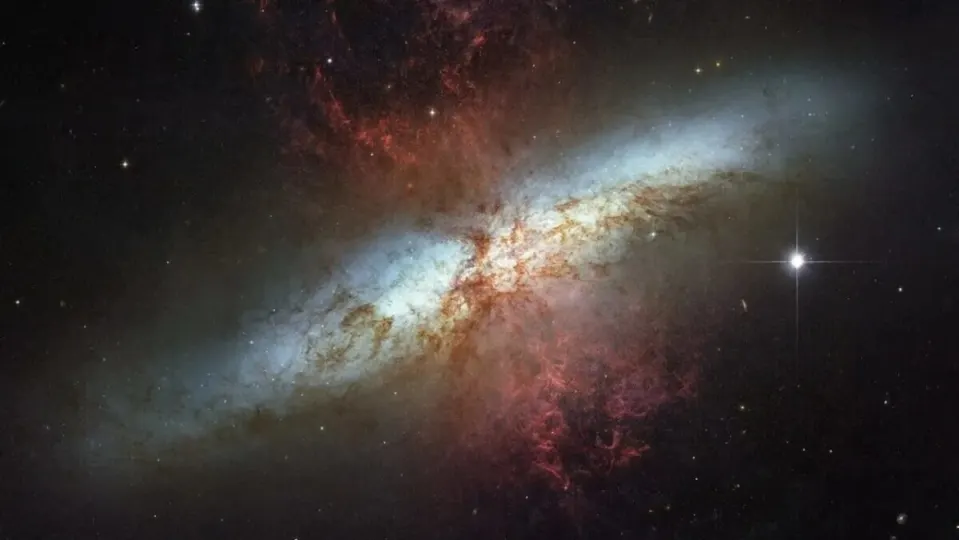The unsettling empty object, called J0613+52, is located 270 million light-years away and, at the very least, appears to be a low surface brightness galaxy (LSB). By the way, did you know that galaxies are more eco-friendly than you?
As its name suggests, a LSB is much less bright than other bright objects that populate the night sky because the gases it contains are so scattered that few stars are formed.
This discovery could provide a rare, possibly never-before-seen insight that challenges our understanding of how stars and galaxies form.
A puzzling discovery
However, this classification maintains that a galaxy of this type would have at least some stars, and J0613+52, with apparently none, could be something even rarer and elusive: a dark and primordial galaxy.
“This could be our first discovery of a nearby galaxy formed by primordial gas,” says Karen O’Neil, a scientist at the Green Bank Observatory, in a statement about the research.
O’Neil and his team stumbled upon the object thanks to a fortuitous error made while studying the LSBs. Basically, they realized that there was a discrepancy in the data between two telescopes they were using, which led them to double-check where they were looking.
“The [Green Bank Telescope] was accidentally pointing to the wrong coordinates and found this object,” said O’Neil.
They not only discovered that the galaxy lacked stars despite being rich in gas – they believe it contains between one and two billion solar masses of hydrogen – but it was also extremely isolated.
“It is too far away from other galaxies for them to contribute to triggering star formation through any encounter,” explained O’Neil. “J0613+52 appears to be undisturbed and underdeveloped.”
That last part, the “unaltered and underdeveloped” one, is key. It suggests that, throughout the billions of years of its existence, the “dark” galaxy has remained stable to an unprecedented degree, without significant gravitational interactions that would cause the clustering of gas to form stars, and without nearby galaxies interfering with its almost perfect balance.
In other words, it is an incredibly well-preserved relic from the early years of the cosmos, so perfect that it almost defies comprehension.
Future observations will have to confirm these findings. As Big Think points out, astronomers will be looking for heavy metals that indicate the presence of stars.
If none is found, it will be strong evidence in favor of J0613+52 being the dark galaxy that has eluded detection for so long.


